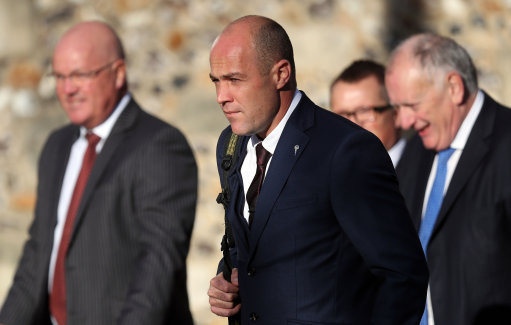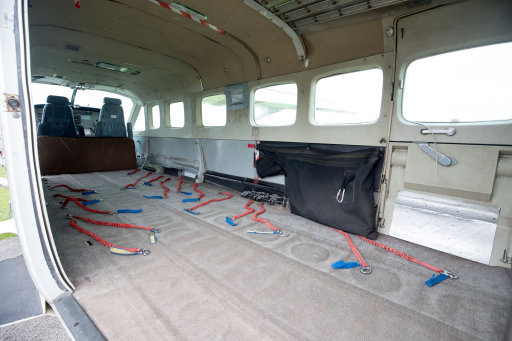
Army Sergeant Had "Hands On Knowledge" Of Assembling Parachutes, Court Hears

An Army physiotherapist was "violently thrown around" as she spiralled to the ground after her reserve parachute failed, the attempted murder trial of her husband has heard.
Emile Cilliers, of Royal Army Physical Training Corps, is on trial at Winchester Crown Court on two charges of attempting to murder his former Army officer wife, Victoria Cilliers, in April 2015.
Cilliers is also accused of damaging a gas valve in their shared home in an attempt to kill his 40-year-old wife.
He denies all three charges.
The prosecution alleges that the defendant tampered with his wife's parachute on the day before her jump with the Army Parachute Association (APA) at Netheravon, Wiltshire.
It is claimed he twisted the lines of the main parachute and removed two of the four slinks - a nylon soft link connector between the lines and the harness - from the reserve.
Justin "Kenny" Everett, a former member of the Royal Artillery parachute display team known as the Black Knights, said he was working as the drop zone controller at the time of the fall.
He said that he spoke to Mrs Cilliers briefly before the jump and said: "She seemed normal, didn't seem any different to normal."
Describing Mrs Cilliers' jump, he said: "Straight away I could see the reserve was not working correctly.
"The reserve parachute was spiralling with only one side attached and the person underneath the parachute was being violently thrown around."
He said she was descending faster than she should have been and added:
"I dialled 999 straight away, I knew there would be a serious injury so I tried to get an air ambulance on scene as quickly as possible."
He said that Mrs Cilliers was "very experienced, more experienced than myself in the qualifications she's got".
Brian Gardner, a fellow APA parachutist, told the court how he saw Mrs Cilliers falling to the ground after her reserve parachute failed. He said:
"I landed normally and then I kind of heard a scream, I looked up, that's when I saw a parachute. It took me a while to see that it was a reserve that was malfunctioning.
"The parachutist started spiralling faster and faster, she started off going slowly and getting faster. She went down behind the hangars and trees."
A court has heard that Cilliers had "100%" hands-on knowledge of packing and assembling parachutes”.
George Panagopoulos, a chief rigger at the APA, said that Cilliers, who was already a qualified main parachute packer, had attended an advanced reserve packing course in October 2012 during which he would have practised with "seven or eight" parachutes.

Describing the defendant's ability, Mr Panagopoulos said:
"He was very good, he knew what he was doing, being a skilled packer, and he had good knowledge of parachutes and canopies and various bits that go with it. He had very good knowledge."
Mr Panagopoulos said that Cilliers had "hands on" experience during the course of assembling a reserve with slinks. He added:
"He definitely had a go at assembling a soft link on to a canopy and to the harness."
He also stated that completion of the course, the defendant would know "the ins and outs of a harness container, more importantly how everything is assembled and fitted and put together and closed."
Describing the assembly of slinks, Mr Panagopoulos said:
"The easy part is undoing it, the trickier part is putting it on."
He added that Cilliers would have "100%" knowledge of how to fully assemble and pack a reserve parachute and the importance of its function.
He told the court that although Cilliers completed the course, he did not carry out enough supervised packings to complete the test to gain the qualification in packing reserve parachutes.









